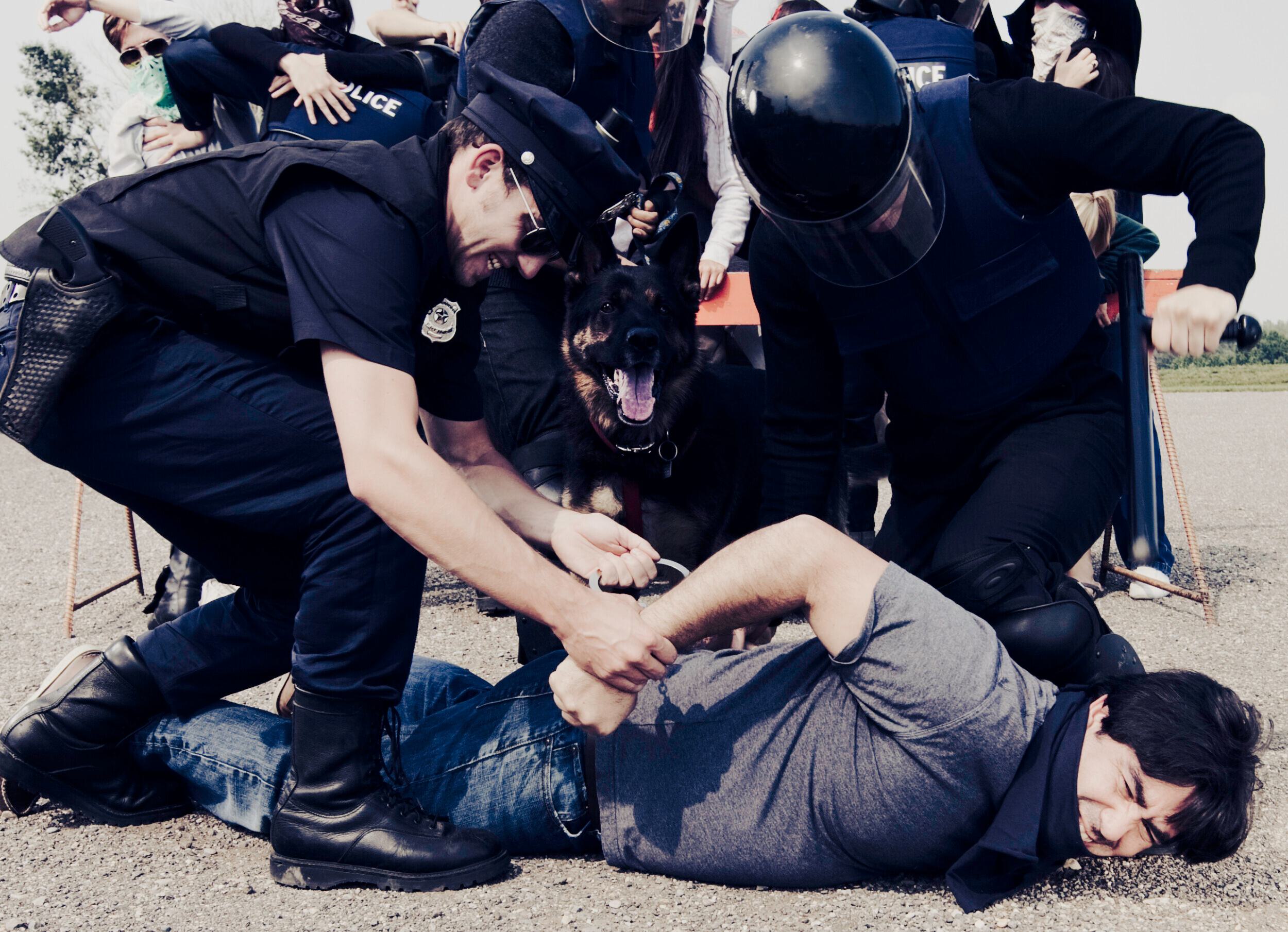Newly filed legislation would prohibit law enforcement from using the four-point restraint technique, also called hog-tying, to subdue suspects. The bill was inspired by the 2010 in-custody death of a Mobile man.
House Bill 396 (HB396), sponsored by State Rep. Ben Harrison (R-Cartwright), would require law enforcement agencies to prohibit using four-point restraints in their existing policies and procedures.
Hog-tying involves cuffing a person's hands and binding the feet. The two restraints are joined together behind the person's back. Several states and municipalities have banned the practice due to the risk of excessive stress and asphyxiation.
The bill is inspired by the 2010 death of Daniel Mingo, who died in the hospital after being tased and hog-tied by law enforcement.
In January 2010, Mobile Police stopped Daniel Mingo and arrested him after a short chase. Due to his struggling, police tased and hog-tied Mingo and placed him in the back of a patrol car before calling an ambulance.
The ambulance transferred Mingo to the hospital. He was later taken off life support.
Daniel's mother, Cynthia Mingo, filed a lawsuit against the City of Mobile. The case reached the 11th Circuit Court of Appeals, which upheld a lower court's decision that "the City was not deliberately indifferent to the rights of Daniel Mingo."
Cynthia Mingo told 1819 News that on the night of Daniel's arrest, she explained to one of the arresting officers that her son was receiving mental health treatment and that he needed a hospital.
"I asked them, if you catch him, please get him to a hospital," Cynthia Mingo said. "He said, 'If we catch up with him, we'll probably have to arrest them.' And the exact words I said to him, 'Please don't kill him.'"
"I told them that I had been taking him to the Mobile Mental Health Center to get help for him. I thought that would help, letting them know that this guy has got something wrong with him. We don't need to beat him and tase him and drag him all over the ground. But, It didn't do any good to put them on alert."
Cynthia Mingo said that Daniel "looked like he had been through a war" when she arrived at the hospital, telling 1819 News that he never regained consciousness before they took him off life support.
"I never got an explanation of why they hog-tied him and put him in the back of that patrol car," Mingo continued. "And even if they had put him in the car tied up that way, he was supposed to have been monitored. The ambulance people said that Daniel was unconscious when they got there."
The State Medical Examiner, F. John Krolikowski, conducted an autopsy on Daniel Mingo and determined the cause of death was "excited delirium," a term now disavowed by most major medical and psychological organizations and criticized as a law enforcement catch-all.
The Mingo family ordered an independent autopsy by Dr. James Lauridson. That autopsy claimed that Daniel died from cardiomegaly and single-vessel coronary disease, with contributory causes of death listed as "restraint" and "schizophrenia." Lauridson believed that the restraint used by police officers contributed to Daniel Mingo's death, a hypothesis shared by Cynthia Mingo.
"My life will never be the same," she concluded. "It has robbed me of my whole family life, honestly. It was just devastating."
"I would love to see this bill pass just to know that no other mother would have to grieve the way that I have, that no other human being would have to be treated this way. It was pure torture."
Ralph Long, a retired Hoover Police Lieutenant and Cumberland law graduate who testified as an expert witness in the Mingo case, is also a strong supporter of the bill.
"Daniel had mental problems, the officers knew he had mental problems, and it was obvious that they had an SOP [Standard Operating Procedure] manual that told them what they were supposed to do and what they were not supposed to do, and they disregarded it," Long said.
"They're supposed to receive training on their SOP every two years, but there was no training."
In Long's experience, the hog-tying technique is an antiquated method of restraint that puts excessive pressure on the pulmonary system of the recipient, which can prove deadly, especially in a high-stress situation or mental health crisis. Long said he is "not a BLM supporter by any stretch of the imagination;" however, he believes the practice should be outlawed before it causes any more deaths.
"Hog-tying doesn't happen until you've already got someone under control," Long explained. "You've got them there with their hands tied behind their back. You can shackle their ankles; you can do several different things. What it does is put pressure on your lungs and on your heart, and you can asphyxiate from that."
"If you shackle someone where their hand and ankles are together, you don't have to put their hands behind their back," Long continued. "Because what [hog-tying] does is it stretches your torso. It's a form of torture."
"I don't have a problem with cops using force to overcome force or even using deadly force when they need to. But when someone is killed over a traffic stop and [the police] violate their own regulations, and there's no repercussions for anybody but that poor family, there ought to be a penalty."
The Department of Justice's National Law Enforcement Technology Center (NLETC), in a 1995 bulletin, warned against the use of hog-tying as it contributes to positional asphyxia: death as a result of body position that interferes with one's ability to breathe.
The NLETC suggested that officers "never tie the handcuffs to a leg or ankle restraint" and "If prone positioning is required, subjects should be closely and continuously monitored."
To connect with the author of this story or to comment, email craig.monger@1819news.com.
Don't miss out! Subscribe to our newsletter and get our top stories every weekday morning.










